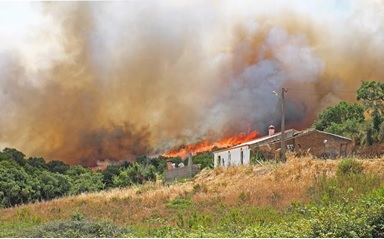Learning Library
Go To--> Learn About | Emergency Preparedness | Home Preparedness
Article: Emergency Preparedness Kits for People with Disabilities
Emergency Preparedness Kits for People with Disabilities
Table of Contents
- Emergency Preparedness Kits for People with Disabilities
Emergency Preparedness Kits for People with Disabilities

Few people live in areas where some kind of disaster is unlikely.
Disasters can include:
- Earthquakes, landslides, Tsunamis, Volcanic Eruptions
- Tropical Storms, Hurricanes, Derechos, Tornados
- Blizzards and Snow/Ice events, avalanches
- Floods and Flashfloods
- Forest and Range Fires
- Droughts, Temperature events
- Transportation accidents, Industrial accidents, terrorist events
Standard kits for everyone often include the following, and more items may be useful depending upon the disaster types prepared for. A blanket may be more useful in preparation for a snow emergency than for a wildfire risk as an example. Most places have some type of recommendations for kit contents and your Area Agency on Aging or Center for Independent Living can usually point you in the right direction. Don’t forget your pets when you are planning! Here are a few good sources of information:
https://www.ready.gov/build-a-kit
http://www.redcross.org/get-help/prepare-for-emergencies/be-red-cross-ready/get-a-kit
https://emergency.cdc.gov/preparedness/kit/disasters/
Evacuation can be difficult for those even without disabilities and preparations should take this in to account. One of the more important things to have in your plan is where to go. Have an out-of-town central contact, and have a meeting place for your local support group so they know where you will likely go. Your local authorities may have a list, but this is something you should have in advance. Here are some additional ideas:
- Minimum of 3 day supply of medications
- Copies of prescriptions and medical contacts
- Extra medical supplies that you normally use
- Are you dependent on electrical lists or devices? What backups do you have if there is no electricity for a prolonged period?
- An extra battery for your cell phone
- Keep kit items that need to stay dry in sealable plastic bags.
Mobility Issues
- Let your local EMS department know where you usually are ahead of time , so they can plan to look for you if necessary.
- Keep a lightweight mobility device (wheelchair, cane, etc.) that can be easily moved
- Wheelchair tire patch kits may be a good idea
- Wheelchair charging device or jumper-cable
Hearing Disabilities
- Consider HOW you will receive emergency notification promptly
- Vibrating or visual alerts may be helpful
- Extra hearing aid batteries (rotate out by using them and replacing with newer ones)
- Have a friend or neighbor who can help alert you
Vision Disabilities
- Extra fold-up white cane in the kit
- Service dog supplies, if applicable
- Dog food – 3 days minimum AND water, perhaps a small plastic dish
- Dog waste bags, a dog toy, leash, etc.
- Paw protection – doggie shoes may be needed for Snow or broken glass
- Some braille/text cards may be helpful for emergency communications Speech Disabilities
- Plan how you will communicate with others if your equipment is not working, including laminated cards with phrases and/or pictograms
Other Helpful Resources:
https://www.disasterassistance.gov/
https://www.ready.gov/individuals-access-functional-needs - by disability
Copyright 2016, AGIS Network, Inc.
Last Updated on 8/13/2016